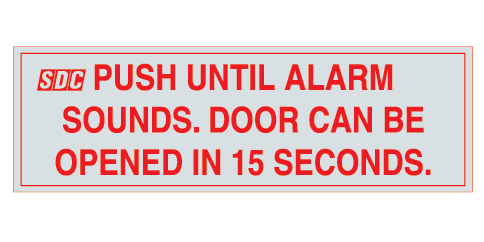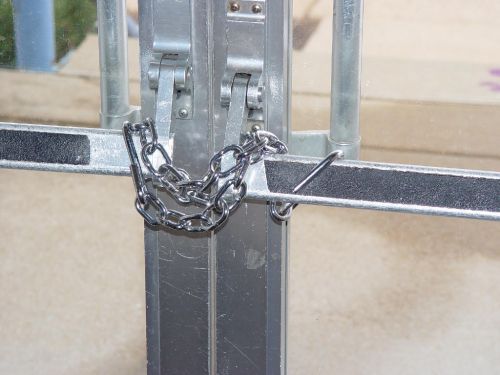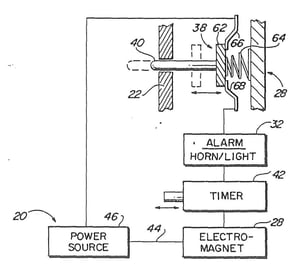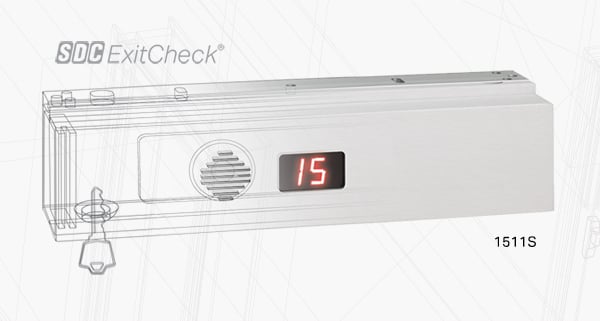
Recently, some readers weighed in with comments on our social media platforms regarding Delayed Egress Systems that indicated misconceptions about their proper application in Security, and Fire and Life Safety applications. This post is the first in a series to address concerns expressed and to provide clarity and resources regarding Delayed Egress systems.
What is Delayed Egress?
Delayed Egress Systems are door locking solutions designed for use in non-emergency situations to prevent a door from opening immediately when egress is attempted. Fire, Life Safety and Building codes usually require that occupants can freely exit in a single motion to unlatch the door without special knowledge, effort, or the use of a key or tool. Delayed Egress systems are an exception to the rule.
Typically used on exit doors, when unauthorized egress is initiated in the locked mode, Delayed Egress locks delay egress through the door for 15 or 30 seconds. Meanwhile, the person exiting must wait while personnel or security respond. The door unlocks after 15 seconds have elapsed, permitting egress. A signal from the fire life safety system will release the lock for uninhibited egress in an emergency.
Delayed Egress systems are used to control pedestrian traffic in government, public and transportation facilities, including airport jetways and tarmacs. They provide theft protection of merchandise, technology and other valuables such as art and museum artifacts in stores, warehouses, art galleries, museums and technology facilities. Delayed Egress locks also restrict movement of wandering patients in senior assisted living, psychiatric, and drug rehab facilities and guard against infant abduction in hospital nurseries.
How Did We Get Here?
Life safety and security needs often create conflicts and emergency exit doors are a prime example. Prior to 1981, emergency exit doors could only be locked by means of a latching exit device. Frequently, alarm devices were paired with the door to sound when egress was attempted. Although immediate egress was always possible, little security was provided. Because of this it was not uncommon to find exit devices chained and/or padlocked illegally during certain times of the day.

In 1981, the NFPA 101 – Life Safety Code was changed to allow for a 15 second delayed release of a failsafe locking device on openings of this type to provide more security without compromising life safety. The locking device is to be connected to an alarm system to allow for immediate release during a fire or other emergency. Refer to NFPA 101 section on “Special Locking Arrangements” for details and restrictions that apply when using Delayed Egress locks: www.nfpa.org/101
What Happened Next?
SDC responded to the change in code by pioneering the delayed egress locking category, patenting the first exit door security system with a 15 second delayed door release in 1985.

Based on acceptance by the door hardware and security industry, Delayed Egress Systems became a recognized code compliance solution to a variety of non-emergency applications while still providing immediate release with smoke or fire detection or other lockdown condition as needed. Then, in 1995, we patented and launched ExitCheck® - the world’s first delayed egress lock to integrate a visual digital display, verbal countdown and alarm tone, alternating verbal message and door release indicator.

Since then, SDC has continued to develop the broadest line of delayed egress locking solutions with a proven record of safety, security and reliability. Other manufacturers have also confirmed the veracity of using Delayed Egress Systems in Fire and Life Safety circumstances while meeting code compliance and security requirements.
As always, we strongly recommend that your local AHJ (Authority Having Jurisdiction) be consulted for their specific code requirements regarding the application of Delayed Egress Systems.
Check back soon as we post more Delayed Egress Locking System application specifics and resources.
Resources
For more than 10 years of articles in Locksmith Ledger about Delayed Egress systems, codes and installations, check out: www.locksmithledger.com/delayedegress
And, visit our own Delayed Egress Innovation page at: www.sdcsec.com/delayedegress

